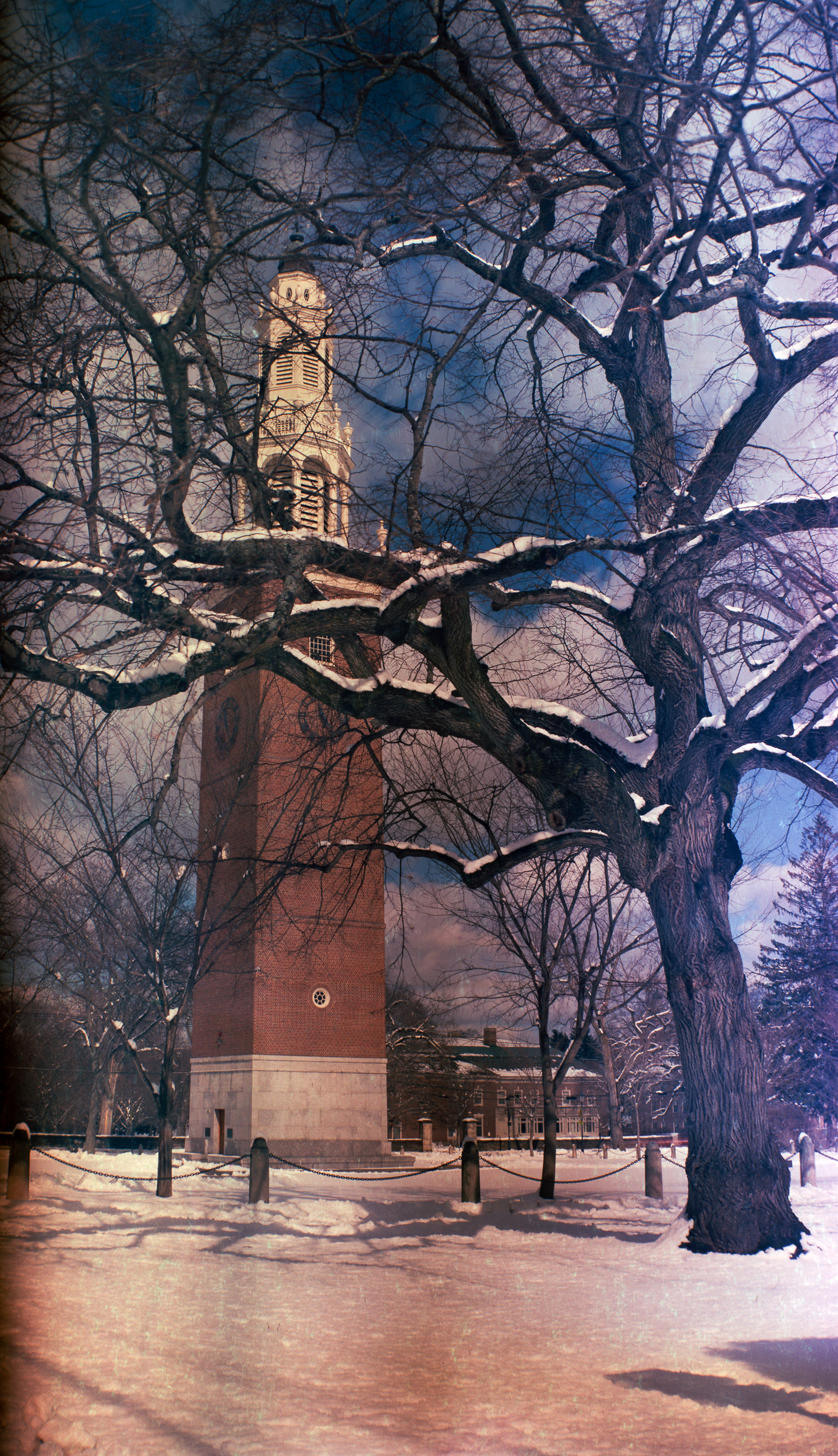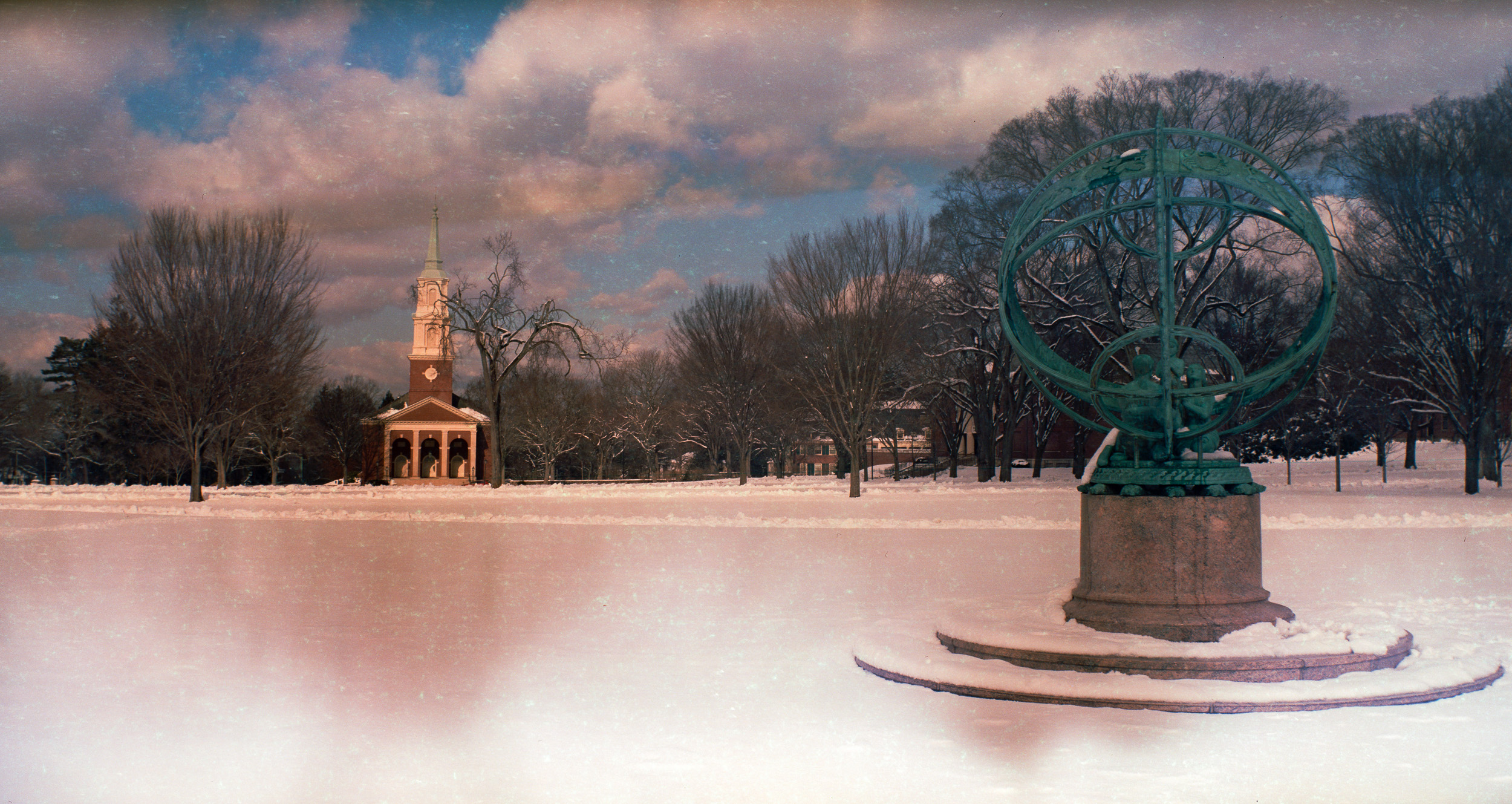No 2A Folding Cartridge Hawk-Eye model B
Like the Brownie 2A, this camera is another family hand-me-down with an unknown early history. It was manufactured by Eastman Kodak from 1926 to 1934. The brand name "Hawk-Eye" originated with the Boston Camera Company which started using it in 1888 for a detective camera. The Boston Camera Company was bought by the Blair camera company (also located in Boston) in 1890. Blair Camera Company was then acquired by Eastman Kodak and moved to Rochester, NY.
Eastman Kodak used the Hawk-Eye name for a range of different cameras over the years. I can't find this particular model in any of the Kodak camera catalogs of the time. So I'm not sure how it was distributed and sold. Supposedly the Hawk-Eye branded cameras were often used as promotional items by third-party companies.
This camera was made for the 116 film format (70 mm wide) and produces nice large 2½" x 4¼" photos. That's more than what you would get from a 6x9 medium format camera. Considering that image size, the camera is very compact and portable. It came with a green fake-leather carrying case, the original instruction manual, and was in perfect working condition. There are no holes in the bellows and the shutter works like new at its marked speeds of 1/25 and 1/50 seconds and in B (bulb) and T mode.
The lens is a simple meniscus lens behind the shutter. On first glance it looks like the lens is missing. But it can capture very sharp images, especially stopped down. There are four aperture settings labelled from 1 to 4. This corresponds to f/11, f/16, f/22 and f/32. Below is an example with the smallest aperture opening of 4 and the camera on a tripod. Because the scene was heavily backlit, I set the shutter to B and held it open while manually firing a #5 flashbulb as fill light. There is no way to synchronize a flash with this shutter, so this "open flash" technique was the expected way to get some extra illumination:
Note the distortion in the straight lines of the window. The simple meniscus lens can't provide correction for that. But usually this is not very apparent. The film I used here was fresh Ilford FP4 Plus in 120 size. That's too small for the camera but I could use it with the help of a 3D printed adapter. In the future I'm planning on doing my own 116 format film rolls by spooling 70mm bulk film onto old 116 spools and backing paper.
I have also tried using original 116 format film. This was last produced in the early 1980's, so of course it is way past its due date. The rule of thumb is to add an extra stop of exposure for each decade past the expiry date. In this case I chose to add an extra 4 stops and treat the originally ISO 100 Kodacolor II film as if it was ISO 6. The resulting color shifts and other faults produce a nice pastel/distressed look I think. The photos were taken on the Phillips Academy campus in Andover, MA:
The camera has a waist-level viewfinder that can be rotated for using the camera in landscape or portrait mode. A big advantage over an equivalent box camera is that some focus adjustment is possible. The camera has settings for 8 ft, "fixed" and 100 ft. I believe "fixed" means about 25 ft and is what a box camera such as the Brownie 2A would provide.
Sources:
- McKeown's Price Guide to Antique & Classic Cameras, 1997/1998 edition
- Kodak Hawk-Eye Cameras
- kodak classics
- Boston Camera Company history
- Blair Camera Company history

